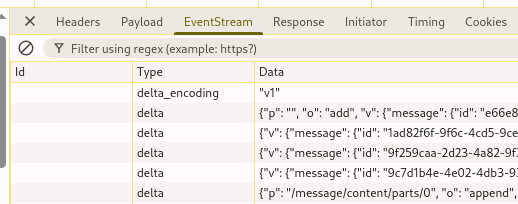Asynchronous request reply pattern without polling
The asynchronous request reply pattern is useful in cases where an application has a client application running in a browser where the user starts an operation and is waiting for an immediate feedback and possibly a success notification. An issue arises only if the requested operation is long running, even a few seconds is unacceptable to return a feedback to a waiting user. Microsoft has a nice documentation about this pattern which essentially propose to have 3 endpoints:
- a POST endpoint to start the long running operation:
POST /operations - a GET endpoint to check for the status of the operation
GET /operations/{id}/status - a GET endpoint pointing to the created resource
GET /operations/{id}
The actual path for the endpoints might vary and aren't explicitely provided in the Microsoft docs, I'm proposing those for the sake of the post, based on your requirements and the semantic of your API you might want have different ones. The interaction flow between the client and the backend is this one:
For example the POST /operations can return something like
{
"id": 1,
"links": [
{
"rel":"status_check",
"href":"https://api.contoso.com/operations/1/status",
"action":"GET"
},
]
}
This flow allows the backend to perform the asynchronous/long running operation and any client can poll the status endpoint and notify the user when the operation is completed. The big advantage of this setup is that it is easy to implement, for example websockets could be an option but they are usually harder to use and you will probably need a third party library to use them. A downside of the polling approach is that a client can execute a lot of retries in a short amount of time, Microsoft suggests to provide a Retry-After header that the client should honor and wait for the indicated time, if you own the client this is an easy requirement to satisfy. While this pattern has a clear use case with browser based clients, for a machine to machine integration I would prefer implementing webhooks bot as a producer and as a consumer. However a company with a low tech maturity / capacity can implementing the polling approach very easily.
In my opinion there is another approach to this pattern, for a browser client, that avoids having the polling on the endpoint and doesn't require websockets. If you have a dedicated BFF for a client app this might be the solution for you.
My proposal is based on 3 endpoints, like the Microsoft one, however the status endpoint is using Server-sent events to notify the frontend about the completion of the long running operation. At the time of writing caniuse.com shows a 96.94% support across browser and notes:
Since January 2020, this feature works across the latest devices and major browser versions
So the Server-sent event feature is supported enough to be used, of course less supported than http requests, however it is a viable options if we want to avoid polling and other more complex solutions like websockets. Before choosing this path, some other limitations need to be taken into account, for example the mdn web docs show this warning
Warning: When not used over HTTP/2, SSE suffers from a limitation to the maximum number of open connections, which can be especially painful when opening multiple tabs, as the limit is per browser and is set to a very low number (6). The issue has been marked as "Won't fix" in Chrome and Firefox. This limit is per browser + domain, which means that you can open 6 SSE connections across all of the tabs to www.example1.com and another 6 SSE connections to www.example2.com (per Stack Overflow). When using HTTP/2, the maximum number of simultaneous HTTP streams is negotiated between the server and the client (defaults to 100).
That said, ChatGPT UI is using server events to get the responses for the backend, just look at the network panel of the browser to see how it works.


If server-sent events are enough for ChatGPT they might be enough even for us. How do we use them to implement the asynchronous request reply pattern? We change the payload returned by the POST /operations to
{
"id":1,
"links": [
{
"rel":"status_check",
"href":"https://api.contoso.com/operations/1/status",
"action":"EventSource"
},
]
}
Almost the same as before, the action is now EventSource so that the client knowns what to do with the endpoint, this value is not standard (as far as I known) choose and document whatever makes sense for you and your team. On the frontend, instead of the polling code, what we have to do is this:
const evtSource = new EventSource("https://api.contoso.com/operations/1/status");
evtSource.addEventListener("pending", (event) => {
// handle pending
});
evtSource.addEventListener("completed", (event) => {
// handle completed, shows notification/toast
// close the connection
evtSource.close();
});
evtSource.addEventListener("error", (event) => {
// handle completed, shows notification/toast
// close the connection
evtSource.close();
});
I added samples for multiple events, at very least we need one to notify the completion of the operation. Since events can carry information in the event.data field the resource URI can be returned in the completed event payload. With this approach the interaction flow is the following:
I prepared a sample C# project with a simple html + javascript UI that shows a simple implementation of the three endpoints and how the frontend is receiving the updates and closing the connection when completed. The asynchronous work is represented by a Task that just waits before completing. The code is on github.